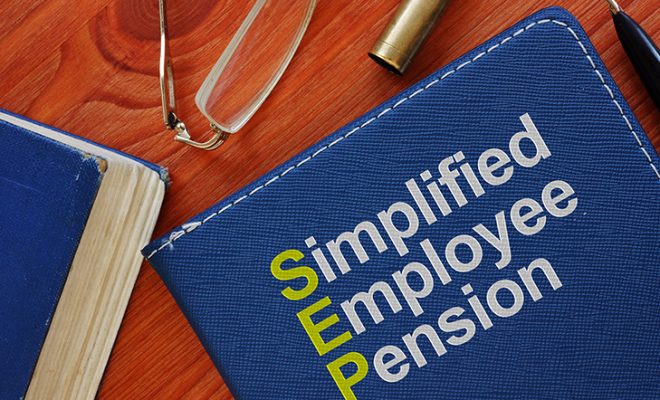How to Get Started with a Simplified Employee Pension?

As the name suggests, a simplified employee pension (SEP) plan is one of the most simplified retirement plans available. These plans are a type of Individual Retirement Account (IRA) established by an employer or a self-employed person. SEP plans allow employers to make tax-deductible contributions to SEP-IRAs for the benefit of eligible employees or themselves. A SEP is one of the most popular types of retirement plans, essentially because of its ease of setting up, low administrative costs, and flexible annual contributions. However, it is critical to understand this simplified retirement plan in detail to make the most of its glorified benefits.
Here is everything you need to know to get started with a simplified employee pension plan:
What is a SEP?
A SEP or simplified employee pension plan is an individual retirement account, where employers or self-employed individuals can make pre-tax retirement contributions to benefit themselves and their employees. The terms, employers and self-employed individuals, in this case, refer to sole proprietors, partnerships, and corporations. The employer contributions made to a SEP-IRA are tax-deductible, and investments grow tax-deferred until retirement. However, all distributions made from this account are eligible for ordinary income tax implications.
All employer contributions that are made to a SEP-IRA vest immediately. This implies that the ownership and control of all the assets of that account lie with the employee as soon as the employer makes a contribution.
How does a SEP work?
SEPs have defined contribution plans that often have annual contribution limits, which are usually higher in comparison to a standard IRA and 401(k) account. Essentially, a SEP-IRA functions partly like a traditional IRA and partly like a 401(k) account, except for the fact that the contributions are made by employers and not employees. They also offer the same investment options as a traditional IRA. These include stocks, bonds, and mutual funds. Moreover, employers do not make any investment decisions. The IRS (Internal Revenue Service) trustee is responsible for choosing eligible investments, while the individual employee account holders select only specific investments. Further, the transfer and rollover guidelines for a SEP-IRA are the same as those that apply to a traditional IRA.
A SEP-IRA allows the contributions to grow tax-deferred until retirement and the withdrawals are taxed as regular income at the hands of the employees during retirement. A SEP-IRA differs from a traditional IRA on the annual contribution limits, which are usually higher. For 2021, the IRS permits employers to contribute not more than 25% of the employee’s income or $58,000. For 2020, the contribution limit was $57,000. The compensation limit used to determine the contribution was $285,000 for 2020 and has been changed to $290,000 for 2021.
A SEP-IRA gives businesses a lot of flexibility in terms of their contributions. Businesses can choose to make multiple contributions in a specific year or just make one contribution towards the end of the financial year. Employers are also allowed to make contributions between the end of a year and their tax filing date. Further, businesses too can claim tax deductions on their SEP-IRA contributions. They can deduct 25% of the compensation or their contribution amount, whichever is lesser from their business tax return.
Who is eligible for a SEP plan?
All self-employed individuals or small-business owners with a few or no employees can benefit by opening a SEP plan. Eligible participants for this purpose include employees, who are:
- 21 years or older.
- Have worked for the employer for three of the past five years.
- Further, these employees should have earned at least $600 from the same employer in the past financial year. For example, if an employee works for an employer for three consecutive years – 2017, 2018, and 2019, and satisfies the age and compensation bar, the employer would need to contribute for the concerned employee in 2020 plan year.
For this purpose, the employee definition includes all full-time, part-time, and seasonal employees, along with those who may have left the company during the year. That said, employers can also set aside 15% of the compensation for themselves if they contribute 15% of that employee’s contribution to their plan.
In addition, employers can exclude specific employees from a SEP-IRA, if:
- The employee is covered by a collective bargaining agreement, which includes retirement benefits.
- The employee is a non-resident alien and does not earn any income from the employer in the U.S.
- The employee is younger than 21 or did not receive $600 in compensation during the last year.
Small-business owners with employees must open a SEP-IRA account for all eligible employees who opt for a SEP. These owners should also make the same contribution to each of those qualifying accounts, including that of their own. For self-employed individuals, the SEP-IRA works as an investment they make for their future, whether as ‘employees’ or ‘employers’.
What are SEP withdrawal rules?
Employees cannot take early withdrawals from a SEP IRA without a penalty. Employees withdrawing money from a SEP-IRA before the age of 59.5 will owe income tax on the distributions as well as a 10% penalty. However, the penalty is waived in case of the following situations:
- First-time home purchase (not more than $10,000)
- Birth or adoption of a child (not more than $5,000)
- Qualified higher-education costs
- Qualified medical expenses
- Health insurance premiums during employment
Moreover, if the withdrawals are made by a beneficiary after the death of the primary account holder, the IRS does not charge any penalty on early withdrawals. However, the regular income tax will be applicable.
How to open a SEP-IRA?
A SEP-IRA can be created any time before the company files for its annual taxes. For example, if for X Ltd., the tax deadline is April 15, 2021, for the year 2020; the company can set up a SEP-IRA account before this date and make the eligible contributions for 2020.
For this, employers will need to provide all eligible employees with disclosures about the SEP-IRA and give them directions on how to enrol in the plan. Each employee should get a written copy of the agreement, which will include participation rules and a complete description of the employer contributions, along with a copy of Form 5305-SEP and an annual statement defining any contributions made to the plan.
Employers can set up the SEP-IRA with a bank, an insurance company, a mutual fund corporation, or an authorized financial institution that provides such a facility. The employer must submit an application for opening the SEP, along with applications from eligible employees. Overall, the SEP plan is simple to set up and administer, and can also be combined with a traditional or Roth IRA.
To sum it up
On the whole, SEP-IRA offers significant advantages in terms of tax-deductible contributions, high contribution limits, easy setting up process, low administration charges, and flexibility. However, there are also several disadvantages like no catch-up contributions for savers aged 50 or older, non-availability of the Roth version, mandatory proportional contributions in case of contributions made for self, minimum distributions beginning at the age of 72, and early withdrawal penalties.
Hence, it is always advisable to consult a professional financial advisor to understand the SEP plan in detail and know of its rules, eligibility concerns, investment strategies, taxes, and suitability of the plan as per your financial condition and goals.










